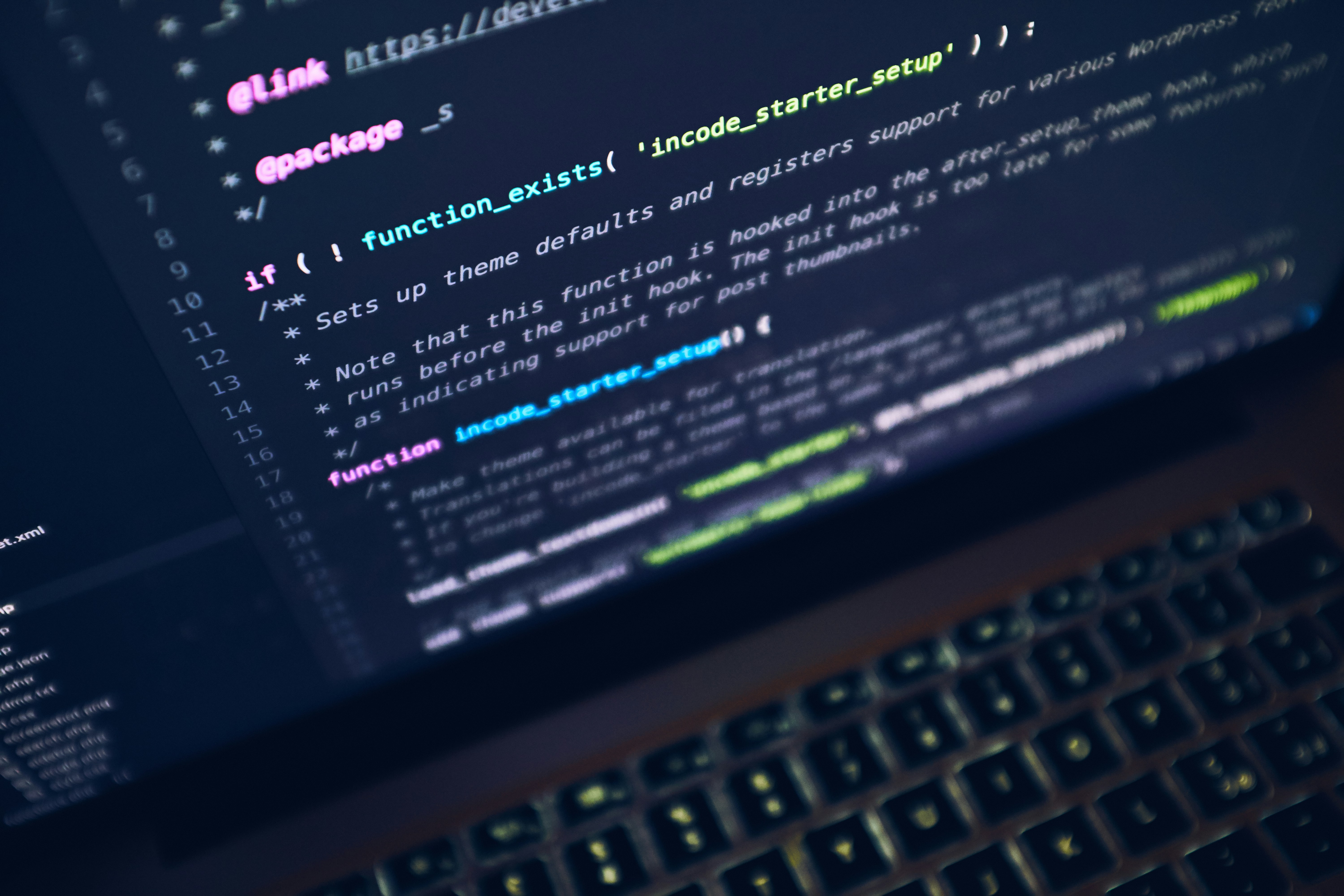Benefits of Social Media for Educators
Using social media can provide a range of benefits for educators, allowing them to enhance communication, engage in professional development, find collaboration opportunities, and access valuable resources.
Enhanced Communication
Social media platforms offer a convenient and instant way for educators to communicate with students, parents, and fellow colleagues. Features such as messaging, group discussions, and announcements can be used to share important information, answer questions, and provide timely updates.
Professional Development
Social media can serve as an avenue for continuous learning and professional development. Educators can join online communities and follow educational leaders to stay updated on the latest advancements in teaching methods, instructional techniques, and educational resources.
Collaboration Opportunities
Social media platforms provide educators with opportunities for collaboration and networking. Teachers can connect with colleagues from around the world, exchange ideas, and share best practices. Collaborative projects can be initiated, allowing students to connect and learn from peers in different locations.
Access to Resources
Social media platforms serve as a treasure trove of educational resources. Educators can discover and share lesson plans, teaching materials, educational websites, and online tools. These resources can be accessed instantly and utilized to enhance teaching effectiveness and engage students in meaningful ways.
By leveraging social media platforms, educators can harness the power of technology to promote student learning, while ensuring their safety. With careful planning and adherence to safety guidelines, social media can be a valuable tool in the modern classroom.
Potential Risks and Concerns with Social Media
Privacy and Security
When using social media for educational purposes, it is crucial for educators to be aware of potential risks and concerns that may arise. One of the primary concerns is privacy and security. Educators must ensure that the personal information of students remains protected and that their online presence is secure. This includes educating students about the importance of maintaining strong privacy settings, avoiding sharing personal information, and being cautious of the accounts they follow and interact with.
Inappropriate Content
Another risk associated with social media is exposure to inappropriate content. Educators should monitor the content shared on social media platforms to ensure it aligns with educational goals and values. By setting guidelines and using content filtering tools, educators can minimize the chances of students coming across inappropriate material.
Cyberbullying
Cyberbullying is a significant concern when using social media platforms. It is crucial for educators to foster a positive digital environment and educate students about responsible online behavior. By implementing anti-bullying policies and encouraging open communication, educators can address and prevent cyberbullying incidents effectively.
Distraction
While social media can be a powerful tool for educational purposes, it can also serve as a distraction. Educators should establish clear guidelines and expectations regarding the appropriate use of social media during educational activities. By setting boundaries and providing guidance, educators can ensure that social media remains a useful tool rather than a distraction in the classroom.
By being aware of these risks and concerns and proactively addressing them, educators can use social media for educational purposes while ensuring the safety and well-being of their students.
This image is property of images.unsplash.com.
## Establishing Guidelines and Policies
In this age of technology, social media has become an integral part of our daily lives. As an educator, you may wonder how you can leverage social media platforms to enhance your teaching while ensuring the safety of your students. Establishing guidelines and policies is a crucial step in achieving this delicate balance.
Developing Social Media Guidelines
To begin, it is essential to create clear and comprehensive social media guidelines. These guidelines should outline the best practices for using social media platforms in an educational setting. They can include guidelines for appropriate behavior, respectful communication, respectful use of others’ work, and the importance of maintaining privacy online.
Teaching Digital Citizenship
Education on digital citizenship is another essential aspect of ensuring student safety while utilizing social media for educational purposes. Teach your students the importance of responsible and ethical online behavior, such as respecting others’ privacy, combating cyberbullying, and using reliable sources of information.
Creating Acceptable Use Policies
Additionally, implementing acceptable use policies is crucial. These policies set the boundaries for how students can engage with social media platforms during class time or on school grounds. They should clarify which platforms are approved for educational use, establish guidelines for appropriate content sharing, and detail consequences for any misuse or violation of these policies.
Educating about Online Safety Measures
Educating students about online safety measures is another vital step in ensuring their wellbeing on social media. Teach them about setting strong passwords, safeguarding personal information, recognizing and reporting suspicious activities, and understanding the potential risks associated with social media platforms.
By establishing guidelines, teaching digital citizenship, creating acceptable use policies, and educating students about online safety measures, educators can effectively harness the power of social media while prioritizing student safety and wellbeing.
This image is property of images.unsplash.com.
## Teaching Students about Online Safety
As an educator, you have the responsibility to teach your students about online safety while incorporating social media into your teaching practices. By imparting knowledge about internet safety, you can help your students navigate the digital world confidently and securely.
Internet Safety Education
Start by educating your students about the potential risks and dangers associated with social media platforms. Discuss topics such as sharing personal information, setting strong passwords, identifying scams, and understanding the consequences of online actions.
Cyberbullying Prevention
Take the initiative to address the issue of cyberbullying with your students. Teach them about the importance of treating others with respect online and the negative impact cyberbullying can have on individuals. Encourage open discussions about cyberbullying experiences and provide resources for reporting and intervention.
Strategies to Ensure Digital Privacy
Guide your students on how to protect their digital privacy. Teach them about the importance of adjusting privacy settings, checking app permissions, and being mindful of the information they share online. Promote critical thinking and decision-making skills when it comes to sharing personal content.
Recognizing and Reporting Inappropriate Content
Educate students on identifying inappropriate or harmful content. Teach them how to recognize warning signs and what actions to take, including reporting such content to the appropriate authorities. Encourage open communication and provide guidance on how to seek help and support when confronted with distressing online situations.
By incorporating these strategies, you can ensure that your students stay safe while utilizing social media platforms for educational purposes. Remember, educating students about online safety is an ongoing process, and it is essential to keep up with the latest trends and developments in this rapidly evolving digital landscape.
This image is property of images.unsplash.com.
## Choosing the Right Social Media Platforms
Social media can be a valuable tool for educators to enhance teaching methods and connect with students in today’s technology-driven world. However, ensuring student safety is paramount. When using social media as an educator, it is crucial to choose the right platforms that prioritize privacy and security.
Evaluating Privacy Settings
Before selecting a social media platform, carefully evaluate its privacy settings. Look for options that allow you to control who can see and interact with your content. Ensure that sensitive information, such as student names or personal details, can only be accessed by approved individuals.
Considering Age Restrictions
Another important consideration is age restrictions. Some social media platforms may have age restrictions in place, and it’s essential to comply with these guidelines to protect student privacy and safety. Choose platforms that are appropriate for the age group you are teaching.
Reviewing Terms of Service
Take the time to review the terms of service of any platform you are considering. Look for policies that prioritize user safety and protect against cyberbullying or harassment. Stay away from platforms that have questionable terms of service or a history of security breaches.
Researching Platform Safety Features
Lastly, research the safety features available on each platform. Look for tools like reporting and blocking capabilities that can help address any issues that may arise. Stay informed about updates and changes to platform safety features to ensure that you are utilizing the most secure options available.
By carefully selecting the right social media platforms, evaluating privacy settings, considering age restrictions, reviewing terms of service, and researching platform safety features, you can use social media effectively as an educator while prioritizing student safety.
Monitoring and Supervising Student Activity
Regularly Checking Student Accounts
One way to ensure student safety while using social media is by regularly checking their accounts. As an educator, it is important to stay informed about what your students are posting and sharing online. By monitoring their activity, you can identify any inappropriate content or potential issues that may arise. This can help you address any concerns and provide guidance to students on responsible social media use.
Implementing Parental Consent
Before engaging students on social media platforms, it is crucial to obtain parental consent. This ensures that parents are aware of their child’s online presence and have given permission for them to participate. By involving parents in this process, you can strengthen the partnership between home and school, as well as address any privacy concerns.
Applying Content Moderation Tools
Utilizing content moderation tools can also enhance student safety while using social media. These tools can automatically detect and prevent the sharing of inappropriate or harmful content. By implementing these tools, educators can create a safer online environment for students.
Setting Clear Expectations for Online Conduct
Lastly, it is essential to establish clear expectations for online conduct. Educators should communicate to students the importance of respectful and responsible behavior when using social media. By setting these expectations, students are more likely to engage in positive online interactions, while minimizing the potential for cyberbullying or other harmful behaviors.
Promoting Responsible Social Media Use
Teaching Digital Literacy
As an educator, you play a crucial role in teaching your students how to navigate the vast world of social media responsibly. By incorporating digital literacy into your curriculum, you can equip your students with the necessary skills to use social media in a safe and ethical manner. This involves teaching them about privacy settings, evaluating online sources for credibility, and understanding the potential consequences of their online actions.
Encouraging Ethical Behavior
It is important to emphasize the importance of ethical behavior on social media platforms. Educate your students about the ethical implications of their online interactions, such as cyberbullying or spreading false information. Encourage them to treat others with respect, both online and offline, and to report any instances of misconduct they come across.
Discussing Online Reputation Management
Help your students understand the significance of their online reputation and how it can impact their future. Teach them about the potential consequences of posting inappropriate content, and guide them on building a positive digital footprint. Discuss strategies for managing their online presence and the importance of maintaining a professional image on social media.
Fostering Critical Thinking
Incorporate critical thinking exercises into your lessons, specifically focused on social media. Encourage your students to question the information they come across online, think critically about its credibility, and consider multiple perspectives. By fostering critical thinking skills, you empower your students to make informed decisions and engage in meaningful discussions on social media platforms.
By promoting responsible social media use through teaching digital literacy, encouraging ethical behavior, discussing online reputation management, and fostering critical thinking, you can ensure that your students navigate social media safely while reaping the educational benefits of technology.
Collaborating with Parents and Guardians
Social media platforms offer educators a valuable tool to enhance and maintain communication with parents and guardians, while also ensuring student safety. By utilizing various features and functionalities, educators can create open lines of communication, provide resources for parental involvement, organize information sessions, and address parental concerns effectively.
Creating Open Lines of Communication
Utilize social media platforms to create a welcoming and inclusive environment where parents feel comfortable reaching out. Encourage them to ask questions, share concerns, or provide feedback. By responding promptly and respectfully, you foster a strong relationship between educators and parents, leading to better support and understanding for students.
Providing Resources for Parental Involvement
Share relevant educational resources, articles, or downloadable materials that parents can access easily through social media. This keeps them informed about your teaching methods and encourages their active participation in their child’s education. By offering resources, you empower parents to contribute to their child’s learning journey.
Organizing Information Sessions
Host virtual information sessions via live videos or webinars on social media platforms. These sessions can cover a variety of topics, such as curriculum updates, learning strategies, or upcoming events. This allows parents to stay informed and engaged in their child’s educational experience while fostering a sense of community.
Addressing Parental Concerns
Social media provides a platform for addressing parental concerns and queries promptly. By acknowledging and addressing these concerns openly and transparently, you demonstrate your commitment to student safety and garner trust from parents. This open and honest communication helps build a strong partnership between educators and families, ensuring a safe and supportive learning environment for students.
By leveraging social media platforms, educators can collaborate with parents and guardians effectively, fostering a sense of shared responsibility for student safety and success. Remember, open lines of communication, providing resources, organizing information sessions, and addressing concerns are key components to ensure a successful partnership with parents and guardians.
Training and Professional Development for Educators
In order to ensure student safety while utilizing social media in the classroom, educators must receive proper training and professional development. This will equip them with the knowledge and skills necessary to navigate the digital landscape effectively and responsibly.
Offering Workshops and Webinars
One way to provide this training is by offering workshops and webinars focused on teaching educators how to effectively integrate social media into their teaching practices while ensuring student safety. These sessions can cover topics such as privacy settings, online etiquette, and recognizing and preventing cyberbullying. By actively engaging in these workshops and webinars, educators can gain valuable insight and strategies for creating a safe and supportive digital learning environment for their students.
Providing Continuous Learning Opportunities
To stay up-to-date with the latest social media trends and best practices, it is important for educators to have access to continuous learning opportunities. This can include subscribing to professional development newsletters, participating in online forums or communities, and attending conferences and seminars dedicated to educational technology. By continuing to learn and maintain an ongoing dialogue, educators can stay informed about the evolving digital landscape and implement appropriate safety measures.
Sharing Best Practices
Another way educators can ensure student safety is by sharing best practices within their professional networks. This can be done through online platforms like social media, where educators can collaborate, exchange ideas, and discuss effective strategies for utilizing technology in the classroom. By sharing their experiences and insights, educators can learn from one another and collectively develop innovative solutions to ensure student safety while using social media.
Building a Supportive Network
Creating a supportive network of educators who are interested in promoting student safety in the digital world is crucial. Educators can join online communities dedicated to educational technology and student safety, where they can connect with like-minded professionals. This network can serve as a valuable resource for sharing resources, seeking advice, and collaborating on initiatives that prioritize student safety while utilizing social media. By building a supportive network, educators can feel empowered and supported in their efforts to create a safe and effective learning environment for their students.
Ensuring student safety while teaching with technology requires educators to receive proper training and professional development. By offering workshops and webinars, providing continuous learning opportunities, sharing best practices, and building a supportive network, educators can successfully navigate social media and create a safe digital learning environment for their students.
Evaluating the Effectiveness and Impact
Social media platforms offer educators a valuable tool for evaluating the effectiveness and impact of their teaching methods. Through these platforms, you can gather meaningful data on student engagement, assess learning outcomes, collect feedback from students, parents, and educators, and make adjustments for improvement.
Measuring Student Engagement
By using social media, you can observe students’ levels of engagement with the educational content you share. This can be done through interactions such as likes, comments, and shares. These metrics can provide insights into the effectiveness of your teaching methods and help you tailor your lessons to better engage your students.
Assessing Learning Outcomes
Social media can also be used to assess student learning outcomes. Through assignments and quizzes shared on platforms, you can easily track students’ progress and identify areas where additional support may be needed. This allows you to provide personalized feedback and address student needs in a timely manner.
Collecting Feedback from Students, Parents, and Educators
Social media platforms serve as a convenient avenue for gathering feedback from various stakeholders. Students, parents, and fellow educators can provide valuable insights on the effectiveness of your teaching methods, the clarity of your instructions, and the overall educational experience. This feedback can inform your professional development goals and help you make informed decisions about your teaching approach.
Making Adjustments for Improvement
Based on the feedback received and the data collected, social media can help you make necessary adjustments to enhance your teaching practice. By analyzing the trends and patterns in student engagement and learning outcomes, you can identify areas for improvement and implement changes that meet the needs of your students. This iterative process allows you to continuously refine your teaching strategies and ensure student safety while teaching with technology.



